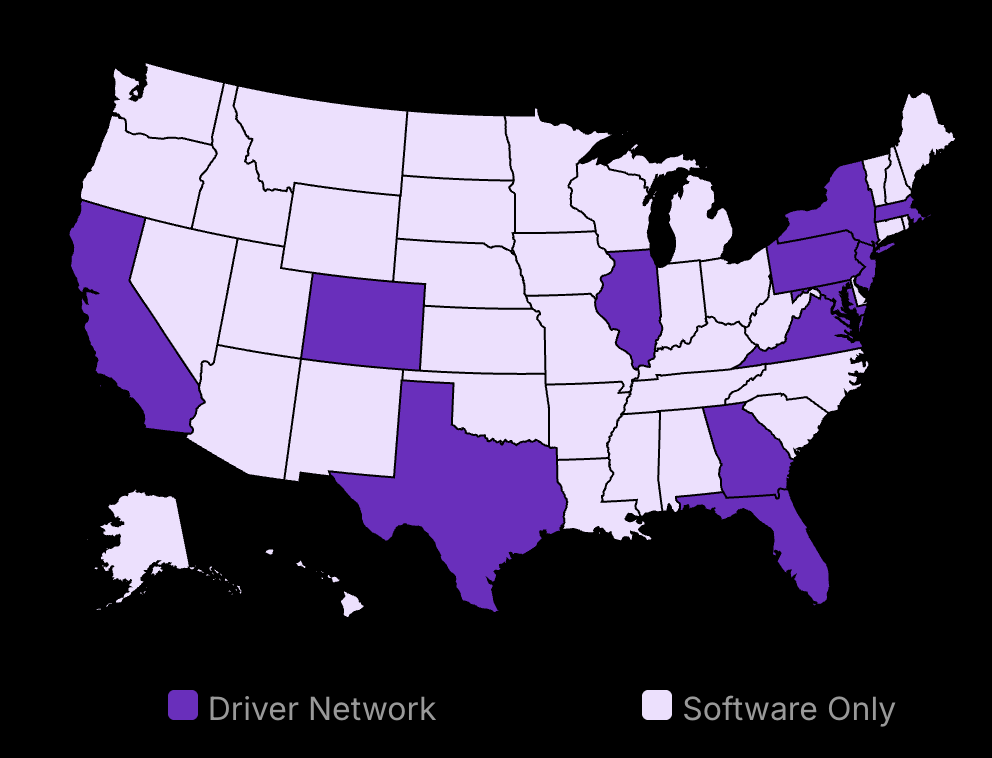Most small business owners don’t think about regulatory reporting processes required by regulatory bodies until they’re facing fines or penalties for non compliance. By then, it’s too late.
In 2024, compliance isn’t just a box to check—it’s a competitive advantage your business can’t afford to ignore, contributing to overall financial stability.
Same regulations. Drastically different outcomes.
Growth Challenges: 51% of small businesses say licensing, certification, and permit requirements make it harder to grow.
Regulatory reporting isn’t just about avoiding trouble—it’s about creating opportunities. When done right, it builds credibility with customers, opens doors with financial institutions and investors, and gives you powerful insights from the data collected for your operational reports and even financial statements. This careful data management is key.
For small business owners juggling countless responsibilities, regulatory reporting requirements and their associated reporting processes often feel like unnecessary burdens. The paperwork seems endless. The changing regulations within the overall regulatory environment make it hard to keep up, especially if operating across multiple jurisdictions. The penalties for mistakes, often stemming from simple human error during report generation, can lead to severe potential losses and reputational damage.
But what if there’s another way to look at these requirements?
What if regulatory reporting, including the preparation of documents like cash flow statements, could actually help your business grow?
The truth is that understanding why regulatory reporting matters for your small business can transform it from a dreaded chore into a strategic advantage, improving governance. Understanding the benefits is crucial.
In this guide, you’ll learn exactly how to turn compliance into a competitive edge—without needing an accounting degree or specific legal expertise.
We’ll walk through practical procedures any small business can take for effectively identifying and meeting regulatory requirements, using report data wisely, and leveraging them for growth. This includes understanding which data sources to use and how to integrate data efficiently.
Your path to making regulatory reporting work for you—not against you—starts here.

Boost customer satisfaction with just a few clicks
Most-Loved Features:
- On-demand drivers
- Real-time GPS tracking
- Delivery confirmation photos
- Over 50% of customers report a smoother delivery experience
What is Regulatory Reporting for Small Businesses and What Are Relevant Regulatory Bodies?
Small businesses must submit info to comply with laws.
Avoids fines with proper reporting.
Ensures legal standards are met.
Small business owners often wear many hats. This includes compliance with regulatory reporting. Regulatory reporting means providing detailed info to government bodies. It’s not just a paperwork task. It’s a vital part of running a business legally and ethically.
For some businesses, this process can seem overwhelming. Tom Sullivan, U.S. Chamber of Commerce VP, said, “Too many regulations cause big headaches for small businesses, even if they feel confident in their ability to comply.”
Disproportionate Burden on Smallest Firms: Very small firms with fewer than 20 employees spend 45% more per employee than larger firms to comply with federal regulations.
Compliance isn’t just about ticking boxes. It’s about protecting a business from penalties and building trust with customers and regulators.
Examples of Regulatory Reporting in Action
Understanding real-world applications helps. Tax and payroll reports are prime examples. They both play a critical role in regulatory compliance.
Tax filings require businesses to report revenue and profits. Accurate submission of tax information to the IRS or tax authority is crucial. Late or inaccurate reporting can lead to substantial penalties.
Per Employee Compliance Cost: Small businesses with fewer than 50 employees incur an average regulatory compliance cost of $14,700 per employee annually.
Employee payroll includes compliance with wage laws. Ensuring accurate social security contributions is another layer of responsibility. Mistakes can lead to fines and legal challenges, impacting a business’s cash flow.
Higher Per Employee Spending: 69% of small businesses report spending more per employee to comply with regulations than larger competitors.
Types of Regulatory Reporting
Different categories of reporting need attention. Financial and compliance reporting stand out due to their direct impact on business operations.
Financial Reporting and Financial Statements
Businesses compile detailed financial reports. These include balance sheets and income statements. They provide transparency and inform stakeholders.
Financial reporting also tracks a company’s health. It communicates with regulators and secures investor confidence. Transparent financial practices can lead to better credit terms and investor relations.
Industry-Specific Regulatory Compliance Reporting e.g., Capital Adequacy Reports
Compliance reporting covers industry-specific regulations. These vary across sectors like healthcare, finance, and food services. It protects against potential legal issues and keeps operations smooth.
For example, food businesses must ensure health code compliance. Non-compliant practices can cause legal issues, resulting in shutdowns. Staying informed about industry regulations is key.
Environmental Compliance Cost Disparity: Small businesses spend 4.5 times as much per employee to comply with environmental regulations compared to larger firms.
Recognizing the importance, goals, and practices of regulatory reporting is vital. It does help businesses navigate legal landscapes. It builds credibility and can aid in strategic decision-making. Companies must integrate regulatory practices. This strengthens their foundation and prepares them for growth and success.
Benefits of Regulatory Reporting: Gaining a Competitive Advantage for Small Enterprises
Strengthens trust and integrity
Supports strategic decisions
Aligns with growth and compliance goals
1. Enhances Business Credibility
Regulatory reporting isn’t just about following laws—it’s a chance to build trust. When small enterprises show they follow the rules, it builds credibility with clients and stakeholders. Accurate reports help prove that a business is reliable and responsible. This builds confidence, not just outside but within the team as well. Consistent transparency leads to stronger business relationships.
Showing dedication to compliance shows integrity. Clients and partners are more likely to work with companies that don’t just act legally, but ethically. This perception can make or break business opportunities. Publishing accurate financial reports also signals stability, which is a key factor for potential investors. This is supported by the observation that “Accurate and transparent financial reports for small businesses are pivotal for attracting investors and securing funding.”
2. Facilitates Informed Decision-Making Regarding Financial Markets
Having a clear picture of financial status through regulatory reports is crucial. They offer a window into what is happening in the business. This clarity aids in making decisions that are both informed and strategic. Business owners can align their plans with the realities of the market and the economy.
Regulatory reports often highlight areas needing attention. Whether adjusting budget allocations or planning expansions, insights drawn from regulatory data drive smart choices. Disregarding this data can lead to misguided strategy and missed opportunities. Compliance reports are not just about avoiding fines but steering the ship in the right direction.
3. Meets Regulatory Objectives for Financial Stability and the Federal Reserve System
Regulatory reporting in the U.S. aligns with goals set by governing bodies. Ensuring market stability, consumer protection, and financial transparency are some of these goals. Reporting is a way to ensure businesses contribute positively to economy-wide health. Although the small business landscape incurs its share of challenges, being part of a larger regulatory framework brings collective benefits.
Engaging with these objectives isn’t just a legal chore. It’s a proactive approach that aligns small businesses with broader goals, fostering growth and innovation. Balancing adherence with growth is a continuous challenge.
4. Reduces Operational Risks
Regulatory reporting serves as a risk management tool. By maintaining compliance, businesses lower the chance of legal trouble. It’s a high investment, but failing in this regard can have costly repercussions.
Using regulatory data to predict risks allows companies to prepare better. Firms can pre-emptively address issues rather than reacting to them after they arise. This proactive risk management ensures smoother daily operations and boosts resilience against potential setbacks that could disrupt growth.
5. Encourages Efficient Resource Allocation
Allocating resources effectively is an ongoing need for small businesses, and regulatory reporting facilitates this process. When firms know where their resources go through detailed reports, it directly impacts financial health. Proper reporting helps identify efficient areas, maximizing productivity when budgets are tight.
Financial and regulatory transparency supports decisions around resource distribution. This bolsters operations and targets growth sectors that lead to an overall healthier business model. For those exploring more, sources like “Financial Accounting Theory” by Craig Deegan offer deep dives into accounting principles that help guide strategy and resource management.
Fostering a culture where regulatory reports are utilized effectively transforms them from a simple requirement into a growth tool. Regulatory reporting is more than compliance—it’s a strategic asset.
How to Navigate Small Business Regulatory Requirements and Improve Regulatory Reporting Processes
Simplify understanding of laws at all levels.
Ensure compliance through expert advice and tools.
Increase accuracy and efficiency with technology.
Step 1: Identify Applicable Regulations
Understanding which rules apply to your business is crucial. Start by identifying local and national laws relevant to your industry. Each industry and location has its own regulations. For example, food businesses must adhere to health codes, while financial services follow financial reporting standards. Make it a routine to stay updated as laws change often. Subscription to industry newsletters and attending regulatory seminars can help. An expert notes, “Too many regulations cause big headaches for small businesses, even if they feel confident in their ability to comply or have the means to outsource compliance tasks.”
Outsourcing Compliance Tasks: 44% of small businesses outsource compliance tasks, demonstrating the financial burden these tasks impose.
Periodic reviews of your regulatory obligations mitigate risks of non-compliance. Include regular assessments in your compliance plan. Conduct these assessments annually or bi-annually, depending on how quickly your industry evolves. Using a checklist ensures nothing is overlooked. Document your findings for accountability and ease of access in future evaluations.
Consider State and Federal Differences, Including the Federal Reserve
Local and federal laws sometimes diverge. For small businesses operating across multiple regions, recognize the differences in regulations. A regulation significant in one state might not apply elsewhere. Ensure to research and apply the correct standards. This knowledge strengthens your business strategy and maintains a competitive edge.
Step 2: Implement Compliance Processes and Data Management
Setting internal processes is key for a robust compliance structure. Establish processes for data collection and reporting. Begin by identifying data requirements based on applicable laws. Decide who collects it and when. Organize this data systematically. A streamlined method ensures ease of reporting and reduces manual errors.
Training staff on compliance requirements is next. Regular training sessions update employees on regulatory changes and internal processes. These initiatives foster a culture of compliance within your organization. Training also increases employee accountability. Therefore, allocate resources for ongoing education, and consider external trainers for more complex topics.
Create a Compliance Calendar
A compliance calendar is advantageous. It outlines critical deadlines and helps prioritize tasks. This calendar also prevents last-minute scrambles. Knowing what is due and when ensures no deadlines are missed. Additionally, sharing the calendar with your team aligns everyone’s efforts.
Step 3: Leverage Technology Solutions for Real-Time Reporting
Technology significantly eases compliance. Utilize accounting software for automated filing. These systems reduce manual data entry errors and save time. Most accounting tools also provide regular updates aligned with current regulations. Automating reporting processes enhances consistency in financial submissions and alleviates stress of meeting deadlines.
Legal tech should also be considered. These tools are designed for monitoring compliance and reporting changes. They provide alerts for upcoming regulatory changes, keeping your business prepared. Another benefit is storing compliance documents securely and in an organized manner. Combine these technologies with periodic audits to confirm ongoing compliance. As one successful entrepreneur concluded, “Compliance is not a burden; it’s a commitment to quality and integrity.”
Ensure Data Security and Privacy
Ensure that any software used complies with data security protocols. This reassurance is pivotal for protecting sensitive business information. It also builds trust with clients and partners who value data privacy. For best results, choose technology that offers end-to-end encryption. This protects data from unauthorized access.
By following these steps, small businesses can confidently manage regulatory requirements.
Understanding the Impact of Non-Compliance on Small Business Growth
Missed business chances due to poor compliance.
Reputation can be lost quickly with a single mistake.
1. Financial Penalties
Non-compliance often comes with big price tags. Penalties can devastate a company’s cash flow, making it harder to cover everyday costs. This strain on resources can lead to hard decisions about cutting expenses or even staffing. This can turn an already costly situation into a disastrous one, pushing small businesses to the edge.
2. Loss of Business Opportunities
Failing to meet compliance standards often means missing out on lucrative contracts or partnerships. Businesses looking for partners or suppliers want to avoid those with compliance issues. Even if your business is great in other ways, this oversight could cost you a lot. Once your company is seen as risky, it becomes much harder to land new deals or find new markets.
3. Operational Disruptions
When compliance is ignored, operational hitches follow. Security incidents come up more often, slowing workflow and hitting revenue. Cyberattacks can take key systems offline. These companies often lack the resources to recover quickly from such disruptions. In industries that need smooth operations, these halts can be serious. This affects not only immediate productivity but can have lasting effects on market reputation. Books like “The Fifth Risk” by Michael Lewis explain how unseen factors can disrupt operations.
4. Regulatory and Legal Actions
Another downside to non-compliance is legal trouble. Such actions can tie up resources and time, keeping a business from focusing on growth. Legal issues can also damage public perception. Texts such as “Compliance Management: A How-to Guide for Executives” offer strategies to minimize these risks.
5. Reputation Damage
Non-compliance can quickly ruin a business’s reputation. Once trust is lost, it is hard to get back. A company’s integrity is one of the most valuable assets it has. If it gets tarnished, both current and prospective clients may look elsewhere. Expert Tom Sullivan notes: “Too many regulations cause big headaches for small businesses.” Bad reviews and negative news spread easily in today’s market. Tools like the book “They Ask You Answer” by Marcus Sheridan offer ways to manage reputation actively.
This list shows the different ways non-compliance impacts small businesses. Learning more about these risks can help prevent them. “Non-compliance can result in severe economic consequences such as hefty penalties, the costliness of securing expert advice, and even loss of business opportunities,” notes The Jacobs Law. Taking action today helps safeguard business growth for tomorrow.
Conclusion
Regulatory reporting isn’t just paperwork—it’s a foundation for small business success and long term sustainability in 2025. By implementing strong governance and procedures for timely and accurate filing, you protect your business from costly penalties while building credibility with customers, partners, and financial institutions. The businesses that thrive understand the benefits of seeing compliance not as a burden but a strategic advantage, contributing positively to the health of financial markets and the broader financial system.
Start by identifying which regulations from relevant regulatory authorities, potentially across multiple jurisdictions if you operate broadly, apply to your specific industry and financial products or services. Then create clear internal processes for data management—this includes handling the data collected needed for reports like financial statements or cash flow statements, potentially finding ways to integrate data from multiple data sources—and train your team accordingly. Timely implementation of these processes is key.
Finally, consider investing in regulatory reporting solutions or technology that streamlines report generation, enhances data security, and aids in achieving accurate filing. These timely steps will save you time and stress in the long run, helping avoid issues sometimes faced even by larger reporting institutions or foreign financial institutions.
Remember that non compliance doesn’t just risk financial penalties and reputational damage—it can close doors to valuable business opportunities. Your reputation in the marketplace depends partly on how responsibly you handle your regulatory obligations. Even the Federal Reserve System relies on accurate aggregated data for monitoring the economy, highlighting the importance of compliance at all levels.
As small business regulations continue to evolve within the dynamic regulatory environment, staying informed for the early identification of potential risks (moving towards real time reporting where feasible) isn’t optional—it’s essential for survival and growth. Issues like systemic risk are monitored by bodies like the Federal Reserve, and while a small business impact is indirect, responsible operations contribute to overall stability. By prioritizing regulatory reporting requirements and ensuring timely and accurate filing today, you’re setting your business up for a stronger, more secure tomorrow with fewer surprises and more opportunities to focus on what you do best. For any small business owner seeking to deepen their understanding of compliance frameworks, exploring the nuances of Regulatory Oversight in Business Compliance offers valuable insights into how oversight mechanisms shape reporting requirements and influence operational practices.

























